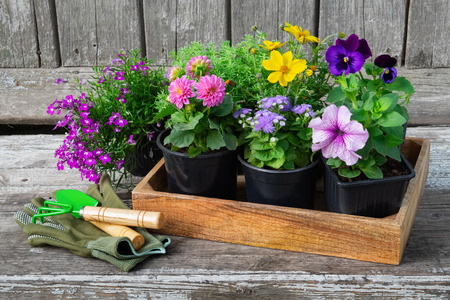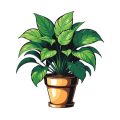1. Introduction to Heirloom and Rare Flowers
When planning your cut flower garden, choosing heirloom and rare flower varieties adds a special touch that blends beauty, history, and uniqueness. These flowers arent just pretty—they carry stories from the past and offer something different from the common selections you might find at big-box garden centers.
What Are Heirloom Flowers?
Heirloom flowers are varieties that have been passed down for generations, usually over 50 years or more. They are open-pollinated, which means they can reproduce naturally and maintain their traits. Gardeners love them for their rich history, unique forms, and often stronger fragrance compared to modern hybrids.
What Makes a Flower “Rare”?
Rare flowers may not have the long lineage of heirlooms, but they are uncommon in todays gardens due to limited commercial production, specific growing needs, or regional scarcity. These blooms stand out with unusual colors, shapes, or growth habits that add surprise and character to your garden bouquet.
Why Choose Heirloom and Rare Flowers for Your Cut Flower Garden?
Adding these varieties to your cut flower garden offers many benefits:
| Benefit | Description |
|---|---|
| Unique Aesthetic | Heirloom and rare blooms often have distinct colors and shapes that elevate any floral arrangement. |
| Fragrance | Many heirlooms were bred before scent was sacrificed for shipping durability—expect stronger perfumes. |
| Biodiversity | Growing less common plants helps preserve genetic diversity in the plant world. |
| Storytelling | Each variety has its own backstory, perfect for sharing at farmers’ markets or with floral clients. |
| Sustainability | Open-pollinated varieties can be seed-saved year after year, supporting long-term gardening practices. |
Examples of Popular Heirloom Cut Flowers in the U.S.
| Flower Name | Origin/History | Main Features |
|---|---|---|
| Zinnia ‘Benary’s Giant’ | Bred in Germany in the mid-20th century but based on older zinnia lines popular in American gardens since the 1800s. | Large blooms, wide color range, long vase life. |
| Nicotiana alata (Flowering Tobacco) | An old-fashioned favorite known since colonial times in North America. | Tall stems, evening fragrance, star-shaped blooms. |
| Dahlia ‘Thomas Edison’ | A historic dahlia introduced around 1929. | Deep purple blooms, dramatic size, great for cutting. |
| Pincushion Flower (Scabiosa atropurpurea) | A Victorian-era favorite brought to the U.S. by early settlers. | Lacy petals, soft fragrance, excellent texture in bouquets. |
Preserving Beauty Through Gardening
By planting heirloom and rare varieties in your American cut flower garden, you’re not just growing flowers—you’re helping protect cultural heritage while enjoying truly one-of-a-kind blooms. In the next section, we’ll explore how to select the best heirloom and rare varieties for your specific growing region and design goals.
2. Planning Your Garden with Specialty Varieties
When growing heirloom and rare flowers for cutting, thoughtful garden planning is essential. These unique varieties often have specific needs, so its important to choose plants that not only suit your taste but also thrive in your local environment. Heres how to get started:
Know Your USDA Hardiness Zone
The first step is identifying your USDA hardiness zone. This tells you which plants can survive the winter in your area. Heirloom and rare varieties may be more sensitive to climate changes, so matching them with your zone helps ensure they will grow well and return year after year if theyre perennials.
USDA Zone Quick Reference Table
| Zone | Min. Temperature (°F) | Suitable Flower Types |
|---|---|---|
| 3-4 | -40 to -20 | Larkspur, Iceland poppies, Sweet peas |
| 5-6 | -20 to 0 | Peonies, Foxglove, Campanula |
| 7-8 | 0 to 20 | Dahlias, Zinnias, Nigella |
| 9-10+ | 20 to 40+ | Tuberose, Celosia, Amaranthus |
Selecting for Bloom Time and Seasonality
A successful cut flower garden includes blooms throughout the growing season. When planning, mix early bloomers like anemones and ranunculus with summer stars like cosmos and zinnias, and finish strong with fall favorites such as chrysanthemums or heirloom sunflowers.
Example Bloom Timeline for Mixed Seasons
| Season | Sample Heirloom/Rare Varieties |
|---|---|
| Spring (Mar-May) | Anemone The Bride, Ranunculus Amandine Pink |
| Summer (Jun-Aug) | Zinnia Queen Lime Orange, Cosmos Double Click |
| Fall (Sep-Nov) | Dahlia Cafe au Lait, Sunflower Italian White |
Create a Cohesive Color Palette
Select a color palette that complements your style and space. Soft pastels create a romantic look, while bold jewel tones add drama. When choosing heirloom and rare varieties, consider how their colors work together when bunched into bouquets.
Think About Companion Planting for Cut Flowers
Certain flowers grow better together. Taller plants like delphiniums can provide shade for more delicate varieties, while some flowers like marigolds deter pests naturally. Good companion planting not only boosts health but also extends bloom time and improves bouquet variety.
Companion Planting Suggestions:
- Dahlias + Basil: Basil repels pests and adds fragrance to arrangements.
- Zinnias + Cosmos: Both are heat-tolerant and create a vibrant summer mix.
- Larkspur + Snapdragons: Provide height contrast and cool-season growth.
By understanding your climate zone and carefully selecting heirloom and rare flowers based on bloom time, color compatibility, and plant relationships, you’ll create a thriving cut flower garden that’s both beautiful and unique.
![]()
3. Sourcing Seeds and Starts
Finding high-quality heirloom and rare flower seeds or plant starts is a key step in building a unique and vibrant cut flower garden. Whether youre looking for century-old blooms or hard-to-find varieties, sourcing from reliable places ensures healthy plants and beautiful harvests. Here’s how to get started:
Trusted American Seed Companies
Many U.S.-based seed companies specialize in heirloom and rare varieties. These businesses often support small-scale growers, offer organic options, and share detailed growing information.
| Seed Company | Specialties | Website |
|---|---|---|
| Baker Creek Heirloom Seeds | Rare and historic flowers from around the world | rareseeds.com |
| Seed Savers Exchange | Preserving heirloom varieties with a strong community network | seedsavers.org |
| Select Seeds | Antique flowers with pollinator-friendly traits | selectseeds.com |
| Johnny’s Selected Seeds | High-quality seeds including unique cut flower types | johnnyseeds.com |
Local Plant Exchanges and Farmers Markets
If you’re looking for starts (young plants) or want to connect with other local gardeners, plant swaps and farmer’s markets are fantastic options. Often, these events feature hobbyists who grow rare varieties not found in commercial catalogs.
Tips for Finding Local Sources:
- Check Facebook groups or Meetup: Look for gardening or plant exchange groups in your area.
- Visit your local extension office: Many universities host master gardener programs with seasonal plant sales.
- Ask at independent nurseries: Smaller garden centers often carry heirloom starts or can special order them for you.
Sourcing Ethically and Responsibly
No matter where you buy your seeds or starts, try to support companies that prioritize non-GMO practices, open-pollinated seeds, and biodiversity. This helps preserve rare flowers for future generations of gardeners.
4. Growing Techniques and Tips
Heirloom and rare flower varieties bring beauty and uniqueness to your cut flower garden, but they often require special care. Understanding their needs when it comes to soil, pest control, and climate will help you grow healthy blooms that thrive in your local U.S. conditions.
Soil Preparation for Heirloom and Rare Flowers
Good soil is the foundation of a successful flower garden. Most heirloom varieties prefer well-draining, nutrient-rich soil with a slightly acidic to neutral pH (around 6.0–7.0). Before planting, test your soil using a home test kit or through your local cooperative extension service. Based on the results, amend the soil accordingly.
Common Soil Amendments
| Amendment | Purpose | How to Use |
|---|---|---|
| Compost | Adds organic matter and nutrients | Mix 2–3 inches into the top 6 inches of soil before planting |
| Aged Manure | Boosts nitrogen levels naturally | Apply in fall or early spring; mix thoroughly into soil |
| Lime or Sulfur | Adjusts soil pH levels | Use based on soil test recommendations to raise or lower pH |
Organic Pest Management
Heirloom flowers can be more vulnerable to pests because they haven’t been bred for resistance like modern hybrids. Using organic methods helps protect both your plants and beneficial insects like pollinators.
Natural Pest Control Strategies
- Companion Planting: Grow herbs like basil, mint, or marigolds nearby to deter common pests.
- Neem Oil: A natural pesticide that works against aphids, mites, and whiteflies without harming bees.
- Diatomaceous Earth: Sprinkle around base of plants to deter crawling insects like slugs and beetles.
- Hand-Picking: For small gardens, simply removing pests by hand can be effective.
- Crop Rotation: Change planting locations each year to prevent buildup of soil-borne pests and diseases.
Climate Considerations Across U.S. Regions
The United States has diverse growing zones, so it’s important to choose heirloom varieties suited for your region—or be ready to adapt your growing techniques.
Flower Growing Tips by Region
| Region | Tips for Success |
|---|---|
| Northeast & Midwest (Zones 3–6) | Start seeds indoors in late winter; use mulch to retain moisture during dry spells; watch for late frosts in spring. |
| Southeast (Zones 7–9) | Select heat-tolerant varieties; provide afternoon shade during peak summer; monitor humidity-related diseases. |
| Southwest (Zones 8–10) | Irrigate deeply and infrequently; use shade cloth if needed; improve sandy soils with compost. |
| Pacific Northwest (Zones 6–9) | Choose mildew-resistant varieties due to damp climate; ensure good air circulation between plants. |
| West & Mountain States (Zones 4–8) | Select drought-tolerant species; protect young seedlings from high-altitude UV exposure; extend season with row covers. |
Caring for heirloom and rare flowers may take extra effort, but the reward is a one-of-a-kind garden full of character and charm. Tailor your approach based on your specific location, and youll enjoy healthy, vibrant blooms all season long.
5. Harvesting and Arranging for Long-Lasting Beauty
Knowing when and how to harvest your heirloom and rare flowers can make a big difference in how long they last in the vase and how beautiful your arrangements turn out. These special blooms often have delicate stems or unique growth habits, so timing and technique are everything.
When to Harvest Heirloom Flowers
Unlike many commercial varieties bred for durability, heirloom flowers often need to be picked at just the right stage of bloom. Here’s a quick guide:
| Flower Type | Best Harvest Stage | Why It Matters |
|---|---|---|
| Zinnias | When petals are fully open and firm to the touch | If the stem is still floppy, it’s too early. Do the “wiggle test” – if it stands firm, its ready. |
| Dahlias | When fully open but before petals start to curl back | Dahlias don’t continue to open after cutting, so harvest them when they look just right. |
| Scented Geraniums | Early morning, before full sun exposure | The oils that give these their fragrance are strongest in cooler temps. |
| Larkspur & Delphinium | When 1/3 to 1/2 of flowers on the spike are open | This gives a good balance of beauty and longevity in arrangements. |
| Nigella (Love-in-a-Mist) | When seed pods begin to form (for textural interest) | The pods are prized for their shape and structure in rustic bouquets. |
The Right Tools Make a Difference
Always use clean, sharp garden snips or scissors to make smooth cuts. Carry a clean bucket of lukewarm water with you during harvesting so you can immediately place the stems in water. This helps prevent air bubbles from blocking water uptake.
A Few Quick Harvesting Tips:
- Harvest in the early morning or late evening when temperatures are cooler.
- Avoid harvesting during the hottest part of the day — blooms wilt faster under heat stress.
- Strip off any leaves that will fall below the water line in your vase to prevent bacterial growth.
Arranging Your Heirloom Blooms – The American Way
A classic American-style bouquet tends to be lush, full, and slightly informal — think farmhouse charm meets vintage elegance. Here’s how to showcase your rare varieties:
Create a Focal Point
Select one or two standout blooms (like an oversized dahlia or vibrant zinnia) as your focal flowers. Build around them with supporting players like cosmos, sweet peas, or strawflowers.
Add Texture and Layers
Mingle fine-textured filler flowers like Queen Anne’s lace or feverfew with bolder shapes. Use greenery such as basil, mint, or scented geraniums for fragrance and foliage contrast.
Tried-and-True Arranging Tips:
- Use odd numbers of each flower type for a more natural look.
- Cut stems at an angle to increase water absorption.
- If using a mason jar or vintage pitcher as a vase, tie a ribbon or jute string around it for added farmhouse appeal.
- Add floral preservative to extend vase life — or make your own with sugar, bleach, and lemon juice!
Caring for Your Bouquet After Arranging
Your work isn’t done once the bouquet is arranged! Keep it looking fresh by changing the water daily, trimming stems every other day, and keeping it out of direct sunlight or heat sources like appliances or windowsills. Most heirloom flowers aren’t bred for long vase life like commercial hybrids, but with proper care you can enjoy their charm for up to a week — sometimes longer!
A Simple DIY Floral Preservative Recipe:
- 1 teaspoon sugar (feeds the blooms)
- 1 teaspoon bleach (fights bacteria)
- 2 teaspoons lemon juice (balances pH)
- Add to 1 quart of lukewarm water
The beauty of growing heirloom and rare varieties lies not only in their uniqueness but also in how they bring character and story into your home. With thoughtful harvesting and arranging, your cut flower garden becomes more than just beautiful — it becomes unforgettable.
6. Saving Seeds and Preserving Heritage
One of the most rewarding parts of growing heirloom and rare flowers in your cut flower garden is the ability to save seeds and keep their legacy alive. In the U.S., many gardeners are embracing sustainable practices, and seed saving is a key part of that movement. Not only does it reduce reliance on commercial seed sources, but it also helps preserve unique plant genetics and family traditions.
Why Save Heirloom Seeds?
Heirloom flowers have been passed down through generations, often carrying stories, memories, and regional significance. By saving their seeds, you help ensure these varieties don’t disappear over time. Plus, plants grown from saved seeds often adapt better to your local growing conditions year after year.
Seed Saving Basics
To start saving seeds from your heirloom flowers, follow these simple steps:
Step-by-Step Guide:
| Step | Description |
|---|---|
| 1. Choose Healthy Plants | Select the strongest and most beautiful flowers to collect seeds from—they’ll produce the best future plants. |
| 2. Allow Flowers to Mature | Let flowers fully mature on the plant so seeds can develop properly. |
| 3. Harvest Seeds | Once seed heads are dry, gently remove them and collect the seeds in a paper bag or envelope. |
| 4. Clean and Dry | Remove any plant debris and allow seeds to dry completely before storing. |
| 5. Label and Store | Label each seed batch with the variety name and date. Store in a cool, dry place away from sunlight. |
Popular Heirloom Flowers for Seed Saving
Here are some heirloom varieties that are easy for beginners to save seeds from:
- Zinnias: Let flower heads dry on the plant before collecting seeds.
- Cosmos: Harvest when seed pods turn brown and start to split.
- Nigella (Love-in-a-Mist): Wait for the pods to rattle before gathering seeds.
- Poppies: Shake dry seed pods into a container to collect tiny seeds.
Sharing Seeds with Your Community
Saving seeds isn’t just practical—it’s a way to connect with other gardeners. Consider joining local seed swaps, community gardens, or online groups where you can trade heirloom varieties. This helps promote biodiversity and keeps rare flowers in circulation across generations.
A Sustainable Gardening Tradition
Sustainable gardening is more than a trend—its a commitment to nurturing our environment and honoring plant heritage. By saving seeds from your cut flower garden, youre playing an active role in preserving beauty, history, and biodiversity for years to come.


